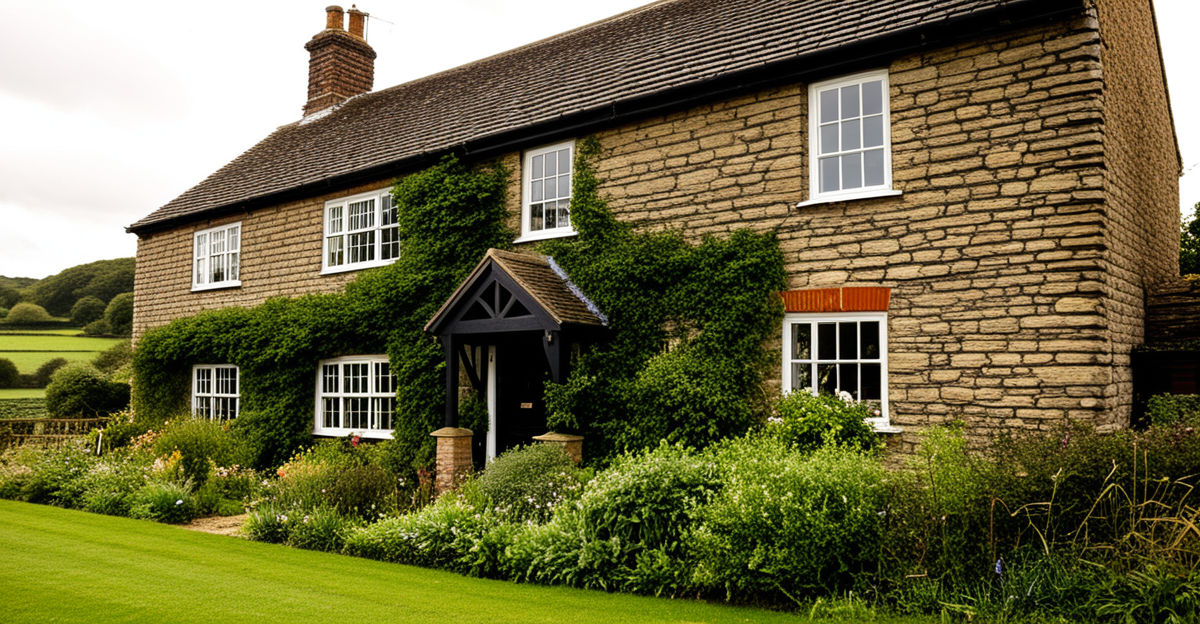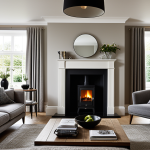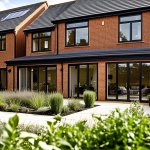Defining Characteristics of a Classic UK Country Home
The classic UK country home is distinguished by several essential features that contribute to its timeless appeal. An authentic country home is deeply rooted in its historical context, often reflecting architectural elements from specific periods while maintaining harmony with the surrounding landscape. This historical lineage is key to its charm and value.
A defining element is the setting—typically nestled within rural or semi-rural landscapes that enhance a sense of tranquility and escape. The scale often reflects modest yet comfortable proportions, providing balance rather than grandeur. Authenticity is paramount; accurate use of period materials and craftsmanship honors the heritage and avoids modern incongruities.
Also to see : What Innovative Designs Can Transform Your UK Living Space?
Local tradition and environment greatly influence these homes. Regional building materials like stone or brick often predominate, embedding homes in their context visually and structurally. Additionally, design choices such as roof pitch or window style mirror regional preferences developed over centuries. These elements together create a cohesive identity that is both historically respectful and environmentally appropriate, making the classic UK country home a true reflection of its place and past.
Architectural Styles and Structure
The georgian country house and the victorian country house are two prominent UK architectural styles that shape the character of classic country homes. Georgian homes are celebrated for their symmetrical facades and balanced proportions, often featuring sash windows arranged uniformly. This style values classical elegance with restrained ornamentation. In contrast, the Victorian country house emphasizes ornate details and complex shapes, with prominent chimneys and textured brickwork.
This might interest you : How Can Small Changes Revitalize Your British Living Space?
Traditional materials play a crucial role in maintaining authenticity. Stone and brick are common for walls, providing durability and a timeless aesthetic. Timber accents and slate roofing contribute to the visual appeal and regional appropriateness. These materials also support the home’s integration into its rural setting.
Structural layouts vary but often include well-defined rooms and grand entryways. Sash windows, characteristic of both Georgian and Victorian styles, are prized not only for their appearance but also for their functionality. The prominence of chimneys serves both practical heating purposes and adds to the home’s historic charm. These defining elements together ground the classic UK country home in tradition and architectural heritage.
Key Interior Features
The traditional country home interiors are defined by several essential features that emphasize warmth, texture, and authenticity. Central to these interiors are fireplaces, often large and made of stone or brick, which serve as focal points and heat sources. They exemplify the defining elements of comfort and history, anchoring living spaces in classic charm.
Exposed wood beams are another hallmark, revealing the craftsmanship and structural honesty typical of classic UK country homes. These beams add rustic appeal while also reflecting period accuracy and traditional construction methods. Similarly, original flooring—often wide wooden planks or flagstone—reinforces the home’s historic integrity.
The large kitchen is a practical yet inviting space, designed to be both functional and social. Its generous scale echoes the home’s scale and provides an area for family gatherings, cooking, and daily life. Traditional country homes often feature panelled walls, grand entryways, and staircases that blend formality with warmth.
Together, these interior features create spaces that are both visually appealing and deeply connected to the historical and architectural narrative of the classic UK country home.
Defining Characteristics of a Classic UK Country Home
A classic UK country home is defined by several essential features that collectively convey its enduring appeal. The setting is crucial, typically in rural or semi-rural areas, fostering tranquility and closeness to nature. This environment shapes the home’s identity alongside its modest yet comfortable scale, avoiding excessive grandeur to maintain intimacy and functionality.
A defining aspect is authenticity, which means using period-accurate materials and craftsmanship to preserve historical integrity. Authenticity prevents modern incongruities that might disrupt the home’s timeless character. This dedication to accuracy reflects a respect for local tradition and the surrounding environment, which determine architectural choices such as roof pitch and window style.
Regional influence is embedded not only in materials like stone or brick but also in the home’s proportions and detailing. These defining elements create a harmonious link between the house, its landscape, and cultural heritage. In essence, the classic UK country home balances historical continuity, context, and practicality, making it a genuine expression of its location and past.
Defining Characteristics of a Classic UK Country Home
Embodying the essential features of a classic UK country home begins with its setting—typically rural or semi-rural landscapes that encourage peace and privacy. This tranquil environment forms the backdrop for the house’s character, intertwining with its defining elements such as scale and historical context. These homes usually avoid ostentation, opting for modest but comfortable proportions that suit country living.
Authenticity stands at the core of these homes. The use of period-accurate materials and craftsmanship ensures fidelity to the historical era, preserving the home’s original character and preventing modern incongruities. This approach also respects local tradition, where builders draw on centuries-old customs in design and construction. For example, regional choices like roof pitch or window style are not arbitrary but represent practical and aesthetic responses to the environment.
Local environment and tradition further influence the classic UK country home’s materials—stone and brick commonly create a visual and structural harmony with the landscape. Together, these essential features cohesively celebrate heritage while meeting modern needs, making authenticity not just a preference but a defining element.
Defining Characteristics of a Classic UK Country Home
A classic UK country home is defined by a blend of essential features that root it firmly in history and place. The setting in quiet rural or semi-rural surroundings provides much more than a backdrop—it shapes the home’s identity and lifestyle, offering a sense of shelter and connection with nature. This setting complements the home’s typically modest scale, which balances comfort with unpretentious living.
One of the most defining elements is authenticity. Using period-accurate materials such as local stone or aged brick preserves historical integrity and keeps the home’s character intact. Authenticity extends to craftsmanship, where traditional building methods are respected to avoid modern incongruities. This conscious preservation honors the original architectural intent and ensures lasting value.
Local tradition and environment play pivotal roles. Regional architectural features—like roof pitch, window style, and materials—reflect centuries of practical adaptation and aesthetic sensibility. For example, in limestone-rich areas, homes incorporate that stone, creating visual and structural harmony with the landscape. These interwoven essential features culminate in homes that are genuine reflections of their heritage, environment, and enduring appeal.










